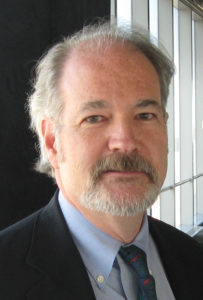 On Thursday, October 31, 2019 at 1:00pm, Dru Crawley will present a lunchtime lecture at the Harvard Center for Green Buildings and Cities. The event will take place at 20 Sumner Road, Cambridge, MA in the lower level conference room. Talks are open to members of the Harvard community. Space is limited. Please RSVP to Jeff Fitton: [email protected].
On Thursday, October 31, 2019 at 1:00pm, Dru Crawley will present a lunchtime lecture at the Harvard Center for Green Buildings and Cities. The event will take place at 20 Sumner Road, Cambridge, MA in the lower level conference room. Talks are open to members of the Harvard community. Space is limited. Please RSVP to Jeff Fitton: [email protected].
Drury “Dru” Crawley is Bentley Fellow and Director, Building Performance Research focusing on building performance, BIM, net-zero-energy buildings, sustainability, resilience, and smart cities. Prior to being elevated to Bentley Fellow in 2014, he led development of Bentley’s suite of building performance software for four years. Before joining Bentley in 2010, Dr. Crawley developed and managed EnergyPlus and the USDOE’s Commercial Buildings Initiative (now Better Buildings Initiative and Alliances) promoting creation of net-zero-energy buildings.
With more than 40 years of experience in buildings energy efficiency, renewable energy, and sustainability, he has worked in engineering software development, government research and standards development organizations, as well as building design and consulting companies. He received his PhD in Mechanical Engineering from University of Strathclyde in Glasgow, Scotland on the topic of building simulation as a policy tool, a Bachelor of Architecture from University of Tennessee, and is a registered architect.
Dr. Crawley is active in ASHRAE (Chair of Standard 169 Climatic Data for Building Design Standards, member and Vice Chair of Standards Committee, member of SSPC 189.1 (Standard for the Design of High-Performance, Green Buildings Except Low-Rise Residential Buildings), member of SSPC 140 (Standard Method of Test for the Evaluation of Building Energy Analysis Computer Programs), former member of the Technical Activities, Research Administration, Advocacy, and Grassroots Government Activities Committees, and past chair of Technical Committees 2.8, 4.2, 4.7, and 7.1). He was elevated to ASHRAE Fellow in 2009 and achieved ASHRAE BEMP (Building Energy Modeling Professional) certification in October 2012. Recipient of ASHRAE Exceptional Service Award (2013), Service to ASHRAE Research Award (2012), Distinguished Service Award (2003), and Symposium Best Paper Award (1999) for “Which Weather Data Should You Use for Energy Simulations of Commercial Buildings?”
He is also active in the International Building Performance Simulation Association (IBPSA Vice President since 2018, at-large board member since 1998, Fellow in 2012, Regional Affiliate Liaison since 2006), IBPSA-USA (IBPSA-USA President since 2019, board member since 2013, vice president 2017-2019, treasurer 2013-2017), U. S. Green Building Council (USGBC, past vice chair and member, Energy & Atmosphere Technical Advisory Group; past member, Research Committee; past research Liaison), the American Institute of Architects (AIA), an Affiliate member of CIBSE, and serves on the editorial boards of three international Journals. He has written more than 125 papers and articles, testified before the U.S. Congress, lectured at more than 30 universities, and made more than 400 presentations on building energy efficiency, sustainability, and renewable energy throughout the world. As an ASHRAE Distinguished Lecturer, he has given more than 150 presentations and workshops to more than 80 ASHRAE chapters throughout the world.
GOING DIGITAL – MODELING INFRASTRUCTURE RESILIENCE FOR SUSTAINABLE URBAN DEVELOPMENT
It is now possible to quickly model a city using 3D technologies such as photogrammetry, LiDAR, and BIM. By federating the data from these sources, it is possible to evaluate the resilience of a city under different planning and disaster scenarios. This presentation includes example models of several cities including Philadelphia and Helsinki. The photogrammetry model of downtown Philadelphia created for the Pope’s visit is merged with the Philadelphia building benchmark data which includes energy, water and other data. For Helsinki, the 26 km2 (10 mi2) reality model is shown along with disaster planning and automated asset identification using deep learning algorithms. And finally using thermography and photogrammetry to create 3D models of buildings thermal signatures.
